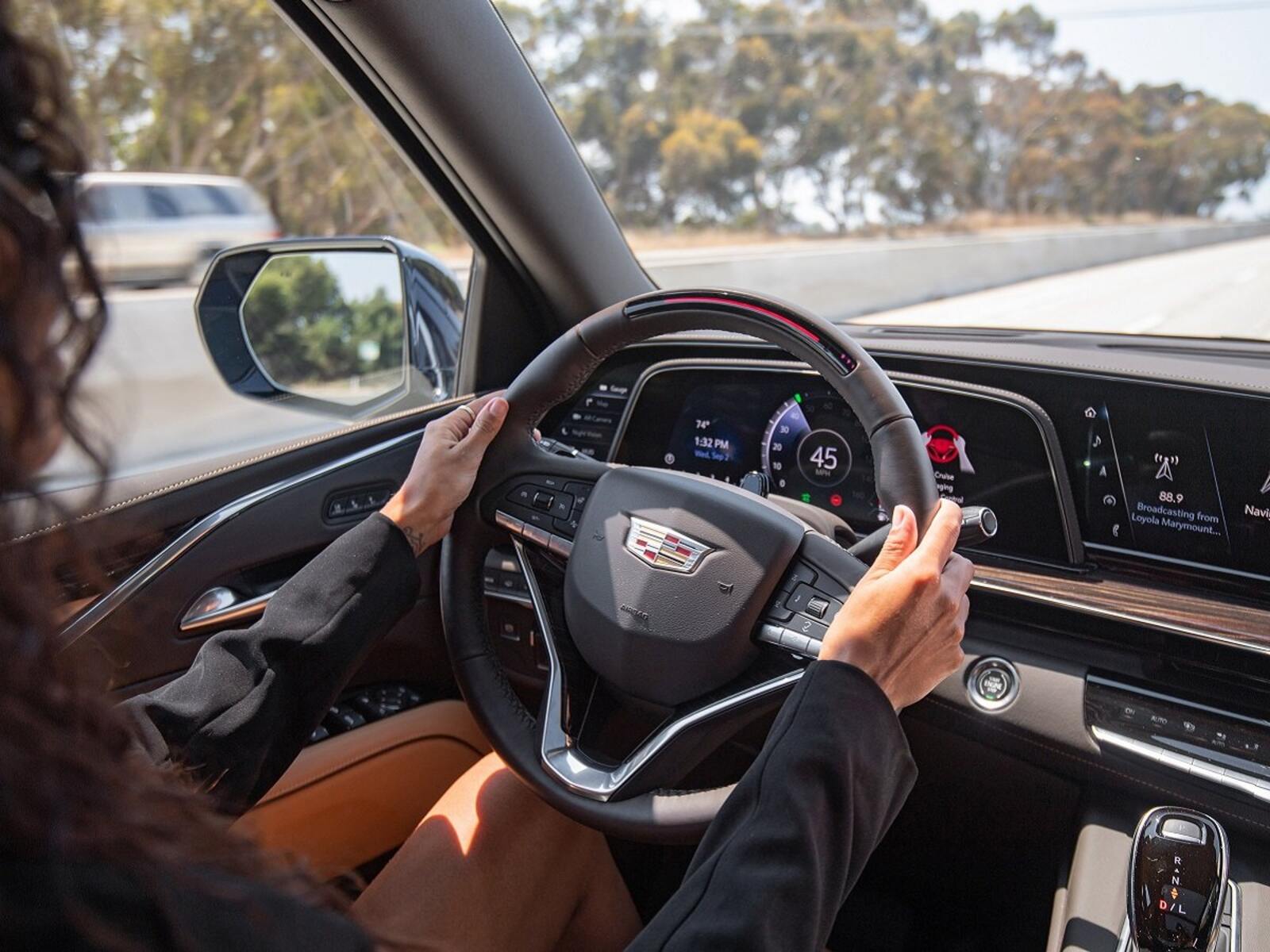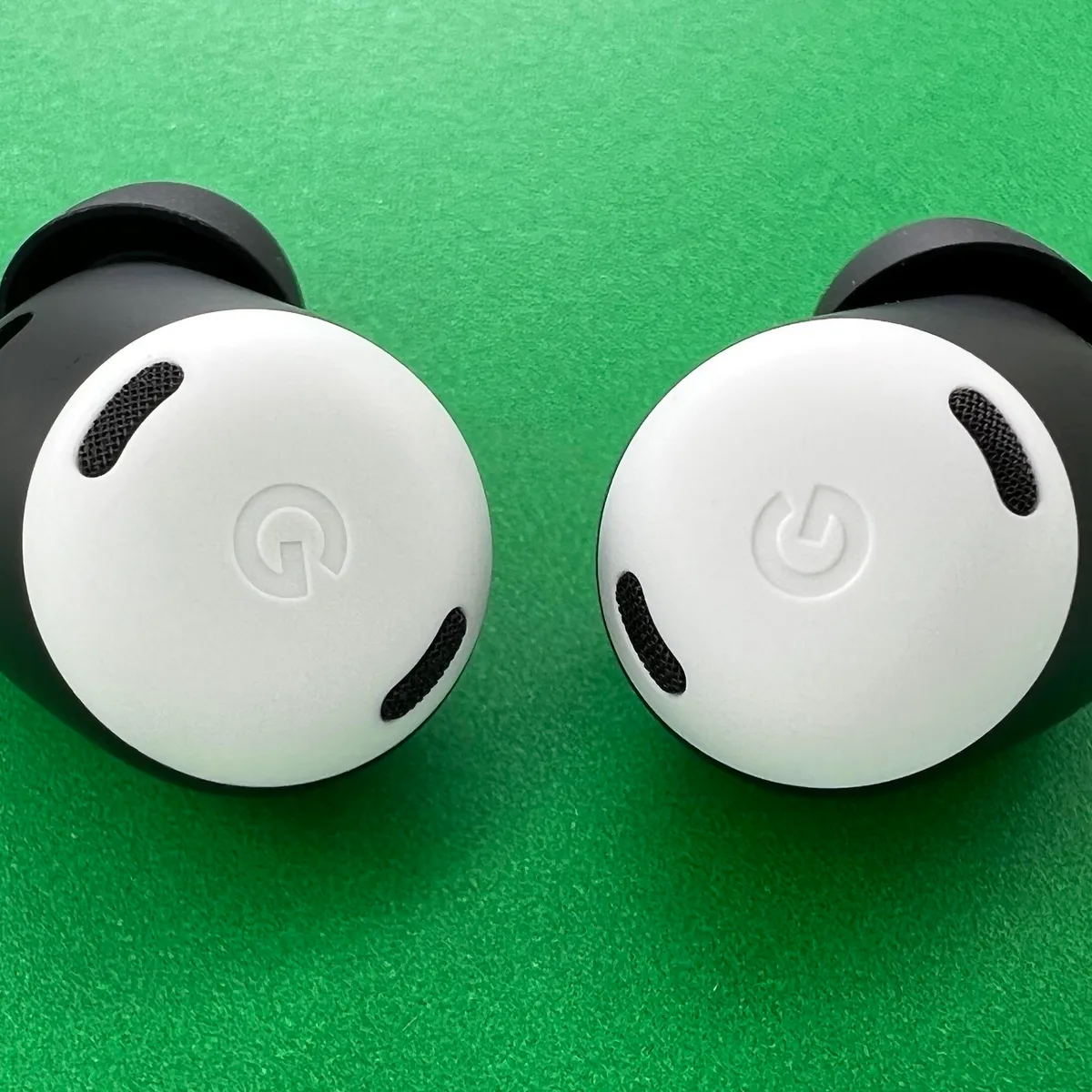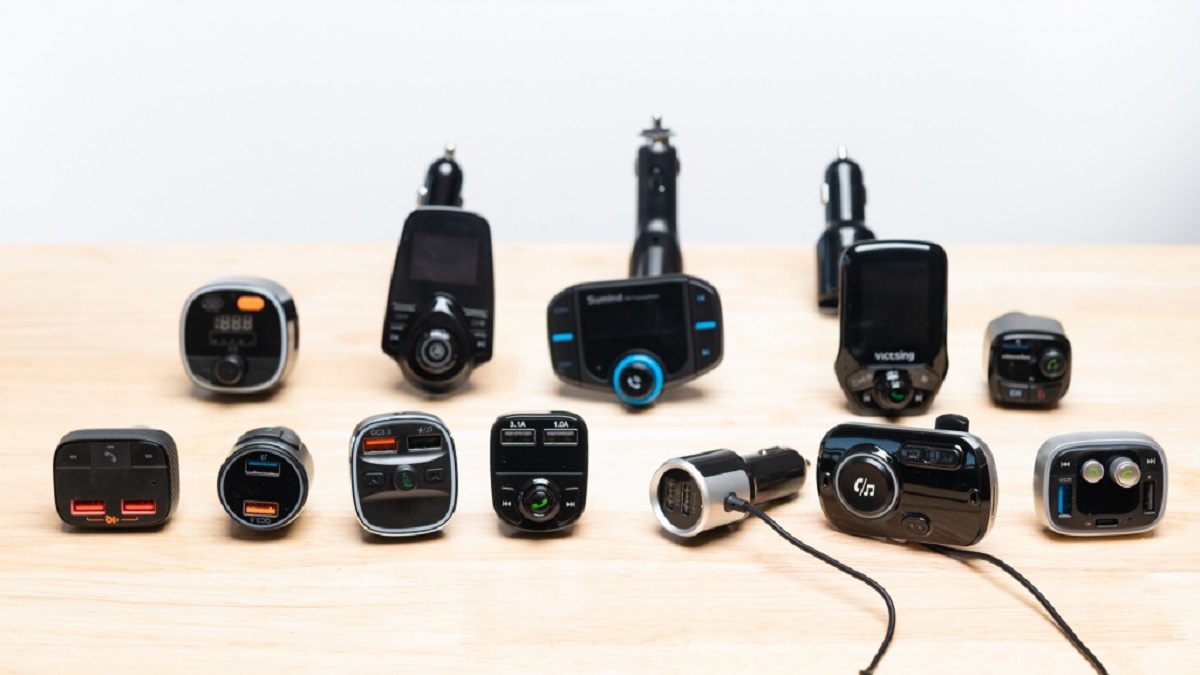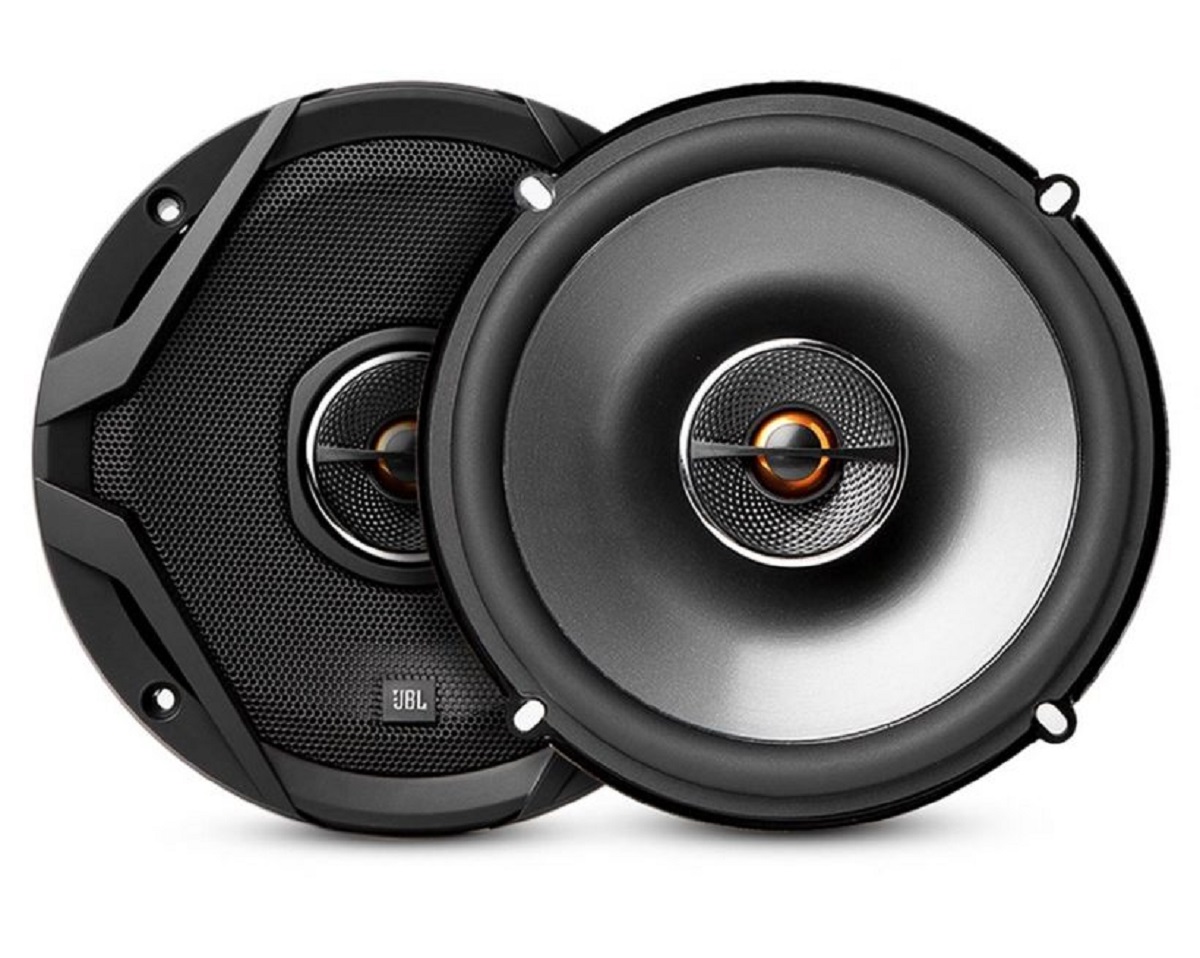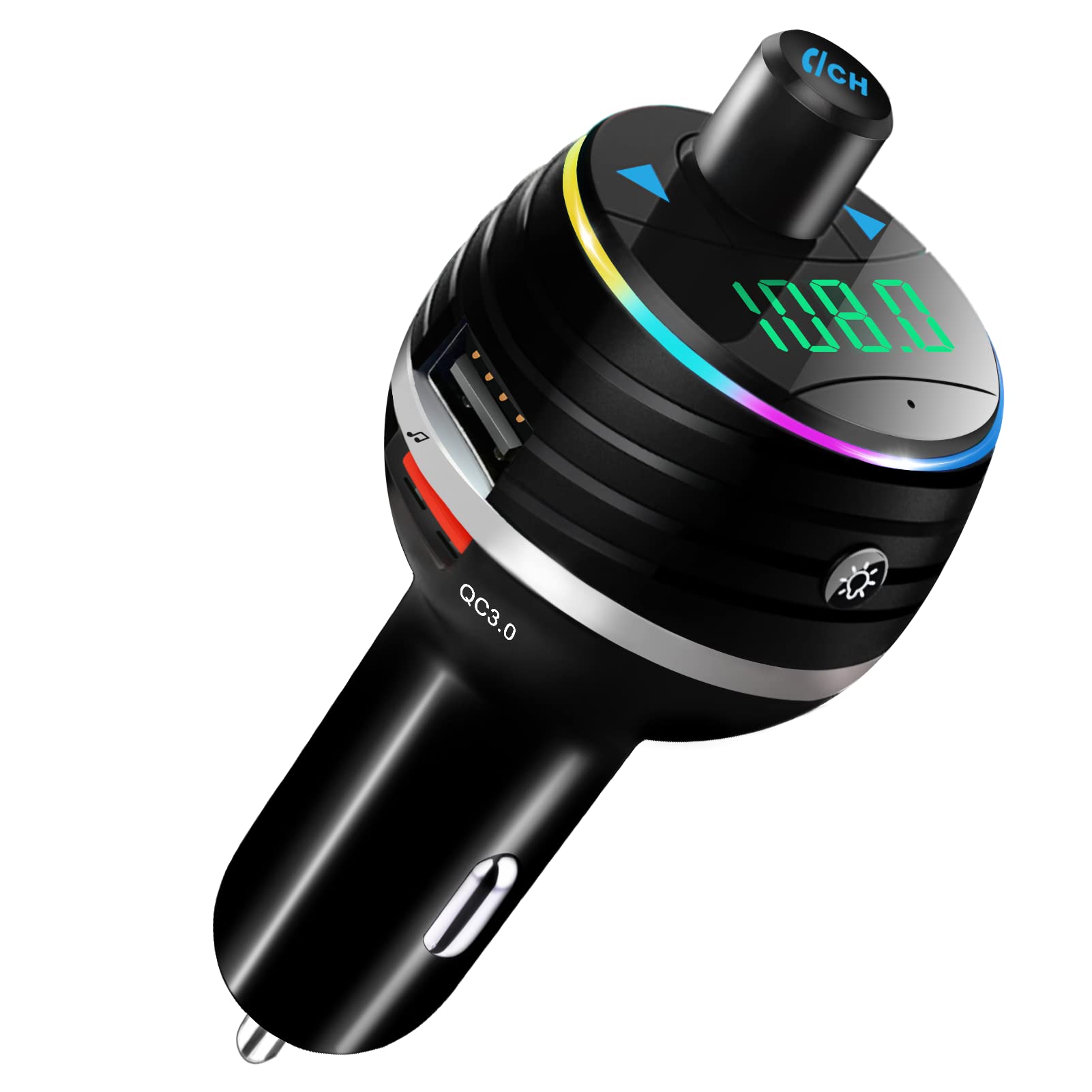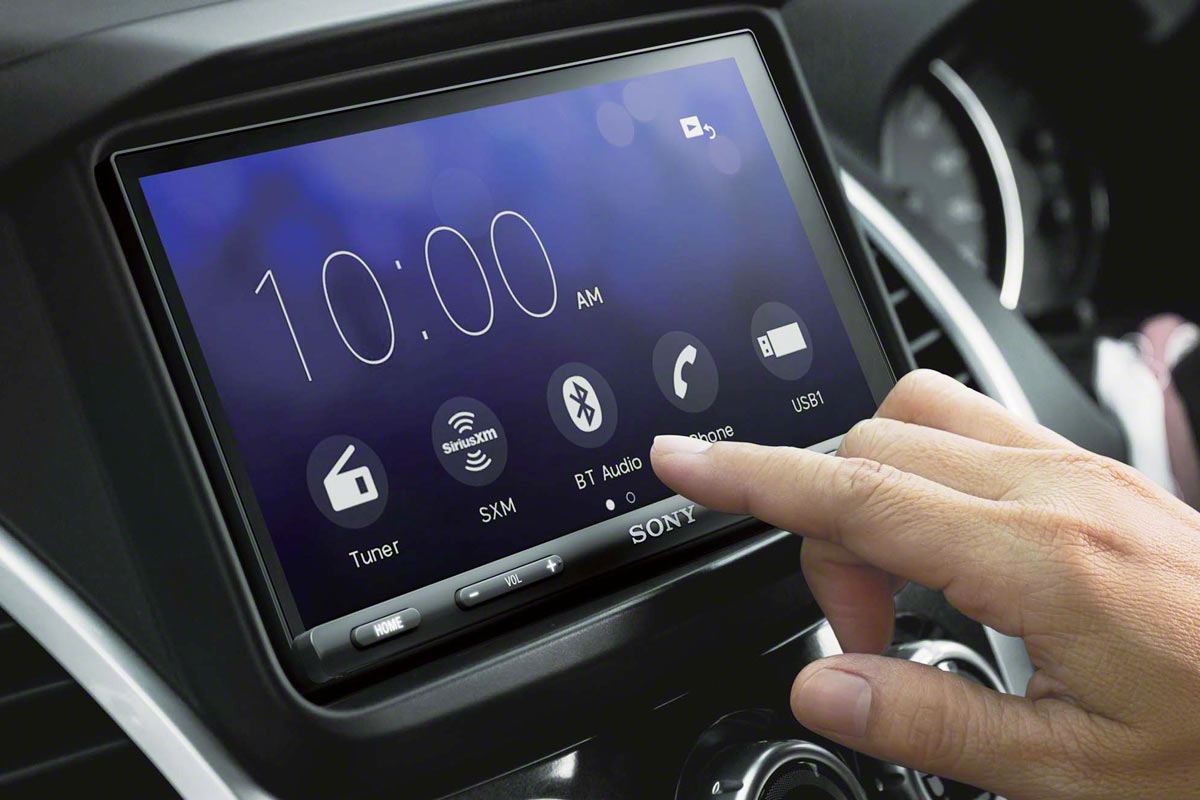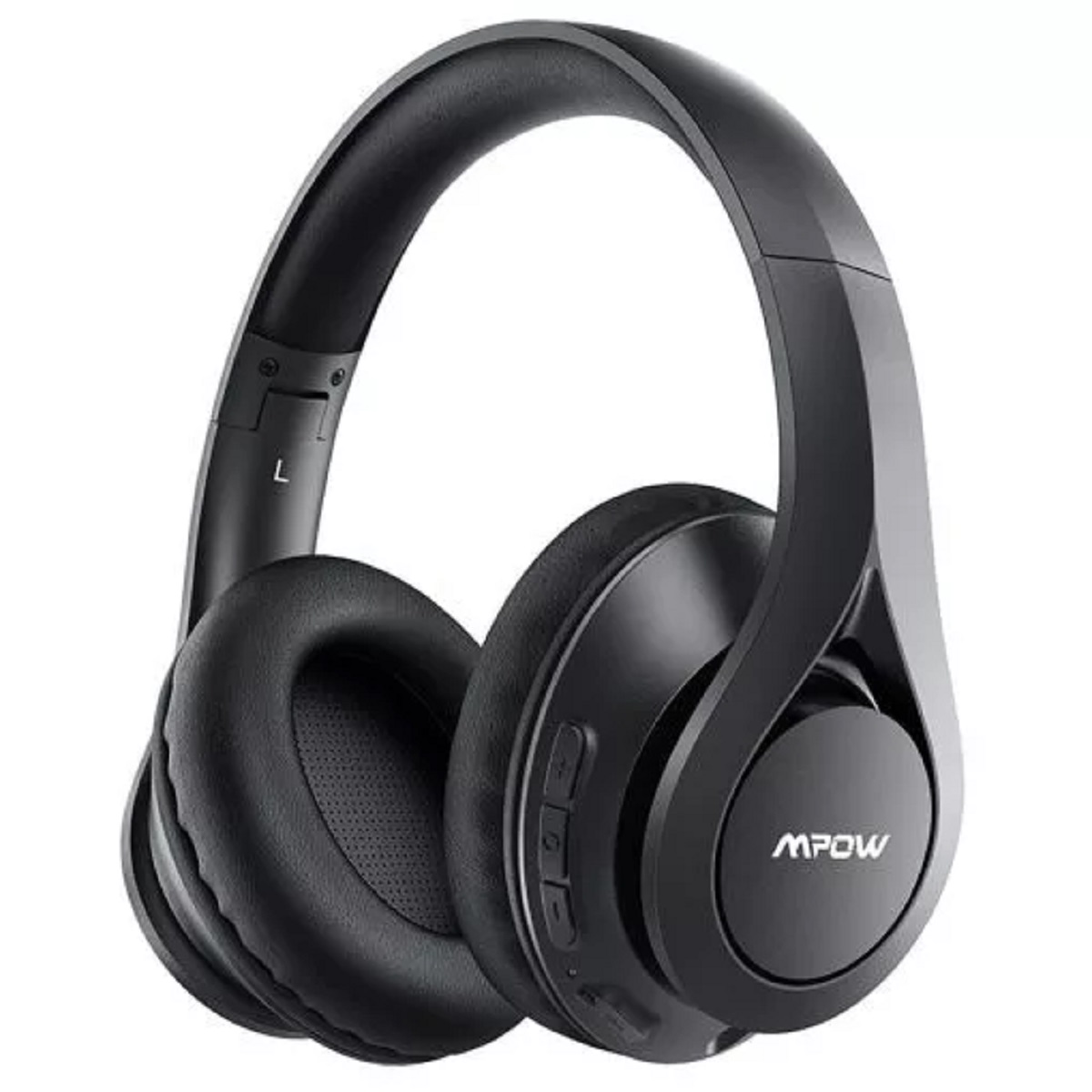Introduction
Have you ever experienced a long road trip where the constant noise of the engine, wind, and traffic became overwhelming? Or perhaps you commute through busy city streets every day, where the cacophony of sirens, horns, and construction noise can make your drive less enjoyable. If so, you’ll be pleased to know that there’s a solution – active noise cancellation (ANC) in cars.
Active noise cancellation technology has become increasingly popular in the automotive industry, offering a more peaceful and immersive driving experience. It’s a feature that utilizes advanced audio systems to actively monitor and reduce unwanted noise within the cabin of the car.
Traditionally, car manufacturers relied on passive noise reduction methods, such as insulation and soundproofing materials, to minimize exterior noise. While effective to some extent, these methods were limited in their ability to completely eliminate unwanted sounds. This is where active noise cancellation comes into play, as it actively counters and cancels out external noises in real-time.
By employing sophisticated microphones strategically placed throughout the car’s interior, active noise cancellation systems are able to capture ambient noises and analyze them. This analysis is then used to create sound waves that are equal in magnitude but have opposite phases to the unwanted noise. When these opposing sound waves are emitted through the car’s audio system, they effectively cancel out the undesired sounds, resulting in a quieter and more serene cabin environment.
Not only does active noise cancellation help to create a more peaceful ride, but it also has a few additional benefits worth considering. First and foremost, it can enhance audio quality within the car. By reducing background noise, active noise cancellation allows for clearer and more immersive audio from the car’s entertainment system, whether it’s music, podcasts, or phone calls.
Furthermore, active noise cancellation can also reduce driver fatigue. Constant exposure to loud and distracting noises can be mentally and physically exhausting, especially during long drives. By removing or minimizing these disturbances, active noise cancellation can contribute to a more relaxed and focused driving experience.
In the following sections, we will delve further into how active noise cancellation works, the different technologies used in its implementation, and whether it’s worth investing in a car equipped with this feature.
How Does Active Noise Cancellation (ANC) Work?
Active noise cancellation in cars is a complex process that involves advanced technology working seamlessly to reduce unwanted noise. The key components included in this system are microphones, a digital signal processor (DSP), and the car’s audio system.
The microphones are strategically placed throughout the car’s interior to capture ambient sounds. These sounds are analyzed by the DSP, which identifies the specific frequencies and amplitudes of the unwanted noise. The DSP then generates an equal but opposite sound wave, known as an anti-noise wave, which is transmitted through the car’s audio system speakers.
When the anti-noise wave combines with the original noise wave, they interact with each other, resulting in destructive interference. This means that the two waves effectively cancel each other out, resulting in a quieter cabin environment.
The effectiveness of active noise cancellation relies on the system’s ability to quickly and accurately analyze and counteract the unwanted noise. To achieve this, advanced algorithms and real-time processing are employed. These algorithms continuously adjust the anti-noise wave to account for changes in ambient noise and maintain optimal cancellation performance.
It’s important to note that active noise cancellation in cars is primarily effective for consistent, low-frequency noise such as engine noise, tire noise, and wind noise. Higher frequency sounds, such as human voices or sudden loud sounds, may not be as effectively canceled out by this technology.
Additionally, it’s worth mentioning that active noise cancellation works best when combined with passive noise reduction methods. The passive methods may include insulation, soundproofing materials, and aerodynamic design features that reduce the amount of exterior noise entering the cabin.
Overall, active noise cancellation in cars is a remarkable technology that significantly improves the driving experience. By actively countering unwanted noise through a combination of advanced microphones, signal processing, and audio system components, it creates a quieter and more comfortable environment for both drivers and passengers.
The Benefits of Active Noise Cancellation in a Car
Active noise cancellation in cars offers numerous benefits that contribute to a more enjoyable and comfortable driving experience. Let’s explore some of the key advantages of this technology:
1. Noise Reduction: The primary benefit of active noise cancellation is its ability to significantly reduce unwanted noise within the car’s cabin. By countering and cancelling out engine noise, road noise, wind noise, and other external disturbances, active noise cancellation creates a quieter and more serene environment. This allows occupants to have better conversations, enjoy music or podcasts without high volume, and generally experience reduced stress from excessive noise.
2. Improved Audio Quality: Active noise cancellation not only reduces exterior noise but also enhances audio quality within the cabin. By minimizing background noise, it allows for clearer and more precise sound reproduction from the car’s audio system. This means that music, phone calls, and other audio content can be enjoyed with greater clarity and detail.
3. Reduced Driver Fatigue: Long drives, especially in noisy environments, can lead to driver fatigue. Constant exposure to loud and distracting noises can be mentally and physically exhausting. By reducing these disturbances, active noise cancellation helps to create a more relaxed and focused driving experience. Drivers can maintain higher levels of concentration and feel less fatigued, leading to safer and more enjoyable journeys.
4. Privacy and Confidentiality: Active noise cancellation can also provide an increased sense of privacy and confidentiality for conversations within the car. By minimizing exterior noise, it makes it more difficult for people outside the vehicle to eavesdrop on conversations happening inside. This can be particularly beneficial during important business calls or personal discussions.
5. Enhanced Vehicle Value: Cars equipped with active noise cancellation technology often exhibit a higher level of sophistication and luxury. This feature adds value to the vehicle and can attract buyers who prioritize a refined driving experience. It also sets the vehicle apart from competitors and demonstrates a commitment to providing a quiet and comfortable cabin environment.
Overall, active noise cancellation in cars enhances the overall driving experience by reducing unwanted noise, improving audio quality, reducing driver fatigue, providing privacy, and increasing the vehicle’s value. Whether you’re embarking on a long road trip or enduring a daily commute, active noise cancellation technology can greatly enhance your journey.
Different Technologies Used for Active Noise Cancellation
Active noise cancellation in cars relies on various technologies working together to effectively reduce unwanted noise. Let’s explore some of the different technologies commonly used in active noise cancellation systems:
1. Microphone Array: Microphones play a crucial role in active noise cancellation. Multiple microphones are strategically placed inside the car’s cabin to capture and analyze ambient noise. The microphones can be positioned in the headliner, pillars, or other parts of the interior to capture noise from different directions. The information gathered by the microphones is used by the system to generate the anti-noise wave.
2. Digital Signal Processor (DSP): The DSP is the brain of the active noise cancellation system. It receives input from the microphones and performs real-time analysis and signal processing. The DSP uses advanced algorithms to identify and isolate specific frequencies and amplitudes of unwanted noise. Based on this analysis, it generates the anti-noise wave that is transmitted through the car’s audio system.
3. Audio System: The car’s audio system is a critical component in active noise cancellation. The anti-noise wave generated by the DSP is played through the audio system’s speakers. The speakers are strategically positioned throughout the cabin to ensure optimal distribution of anti-noise and cancellation of unwanted noise. The audio system needs to be of high quality to accurately reproduce the anti-noise wave and provide a seamless active noise cancellation experience.
4. Advanced Algorithms: Active noise cancellation systems utilize advanced algorithms to process the input from the microphones and generate the anti-noise wave. These algorithms continuously adapt and adjust based on the changing noise environment in real-time. They help maintain optimal cancellation performance, ensure efficient noise reduction, and provide a consistent and pleasant driving experience.
5. Combination with Passive Technologies: Active noise cancellation is often complemented by passive noise reduction technologies. These passive methods include using insulation materials, soundproofing barriers, and vibration-damping materials within the car’s construction. These passive technologies help reduce the amount of exterior noise entering the cabin, working in conjunction with active noise cancellation to create a quieter environment.
6. Personalization and Customization: Some active noise cancellation systems allow for personalization and customization. This feature enables occupants to adjust the level of noise cancellation according to their preferences. Whether it’s fine-tuning the cancellation settings for different driving conditions or prioritizing certain frequencies, personalization options add flexibility to the active noise cancellation system.
With the integration of microphone arrays, advanced DSPs, audio systems, algorithms, and passive technologies, active noise cancellation in cars can effectively minimize unwanted noise and create a more peaceful cabin environment. These technologies work in harmony to improve the overall driving experience for both the driver and passengers.
How Active Noise Cancellation Differs from Passive Noise Reduction
Active noise cancellation (ANC) and passive noise reduction are two methods used to minimize unwanted noise in cars, but they differ in their approach and effectiveness. Let’s delve into the distinctions between these two techniques:
Active Noise Cancellation (ANC): ANC utilizes advanced technology to actively counter and cancel out unwanted noise within the car’s cabin. This technology relies on microphones strategically placed throughout the vehicle to capture ambient noise. The noise is then analyzed by a digital signal processor (DSP), which generates an equal but opposite sound wave (anti-noise wave) that is played through the car’s audio system. When the anti-noise wave combines with the original noise, they cancel each other out through destructive interference, resulting in reduced noise levels. ANC is effective in reducing consistent, low-frequency noise like engine noise or road noise.
Passive Noise Reduction: Passive noise reduction, on the other hand, focuses on minimizing noise through insulation and soundproofing materials. This method involves using materials such as acoustic foams, insulation pads, sound-damping panels, and double-glazed windows to block and absorb external noise. Passive noise reduction techniques aim to create a barrier between the exterior and the car’s cabin, preventing noise from entering the vehicle. While passive noise reduction can effectively reduce high-frequency noises and vibration, it may be less effective against low-frequency sounds like engine rumble.
Effectiveness: Active noise cancellation is specifically designed to counteract and cancel out specific frequencies of noise. With real-time analysis and precise generation of anti-noise waves, ANC is highly effective in reducing consistent low-frequency noise. On the other hand, passive noise reduction is generally effective across a wider range of frequencies and can minimize both high and low-frequency noises. It provides a more comprehensive approach to noise reduction but may not be as effective as ANC in canceling out specific frequencies.
Flexibility: ANC offers greater flexibility and adaptability compared to passive noise reduction. Active noise cancellation systems can adjust the cancellation settings based on the noise environment and the occupant’s preferences. Some systems even allow for personalized adjustments to cater to individual needs. In contrast, passive noise reduction relies on the physical properties of the materials used, offering less flexibility in terms of customization.
Combination: Active noise cancellation and passive noise reduction techniques can be combined to achieve optimal results. By integrating both methods, noise reduction can be maximized across a wide range of frequencies. They work together to create a quieter and more comfortable cabin environment, enhancing the overall driving experience.
In summary, active noise cancellation actively counters and cancels out specific frequencies of noise through the generation of anti-noise waves. It is highly effective in reducing consistent, low-frequency noise. Passive noise reduction, on the other hand, relies on materials and insulation to minimize external noise and is generally effective across a wider range of frequencies. While each technique has its own strengths, combining active and passive noise reduction can provide the most comprehensive approach to mitigate unwanted noise in cars.
Is Active Noise Cancellation Worth It in a Car?
Active noise cancellation (ANC) technology offers a range of benefits, but is it truly worth investing in a car equipped with this feature? Let’s consider some factors to help determine if active noise cancellation is worth it for you:
1. Personal Preference: If you highly value a quiet and peaceful driving experience, active noise cancellation can significantly enhance your time on the road. It creates a serene cabin environment by reducing engine noise, wind noise, and other external disturbances. For individuals who prioritize comfort and a noise-free driving experience, the investment in ANC technology can be well worth it.
2. Long Distance Driving: If you frequently embark on long road trips or have a lengthy daily commute, active noise cancellation can be particularly beneficial. Constant exposure to loud and distracting noises can contribute to driver fatigue and make journeys less enjoyable. By reducing unwanted noise, ANC helps to create a more relaxed and focused driving experience, potentially reducing driver fatigue and enhancing overall comfort.
3. Audio Quality: Active noise cancellation not only reduces exterior noise but also improves audio quality within the vehicle. By minimizing background noise, it allows for clearer and more immersive sound reproduction from the car’s audio system. If you are an audiophile or enjoy listening to music, podcasts, or making phone calls during your drives, active noise cancellation can significantly enhance your audio experience.
4. Driving Environment: Consider the driving environment in which you spend most of your time. If you often drive on busy city streets, highways with heavy traffic, or in areas with high noise levels, active noise cancellation can greatly improve the comfort of your drive. The technology is particularly effective in reducing consistent, low-frequency noises such as engine noise or road noise, creating a more peaceful and enjoyable driving environment.
5. Value for Investment: It’s important to assess the value for investment when considering active noise cancellation. Cars equipped with ANC tend to have higher price tags compared to those without this feature. Evaluate whether the benefits of active noise cancellation justify the additional cost for you personally. If the improved comfort and enhanced driving experience are high priorities, the investment in a car with ANC can be a worthwhile expenditure.
Ultimately, the decision of whether active noise cancellation is worth it in a car depends on your personal preferences, driving habits, and the value you place on a quiet and comfortable driving experience. ANC can significantly reduce unwanted noise, improve audio quality, and increase overall comfort. If these factors align with your priorities, investing in a car equipped with active noise cancellation technology can be a decision that enhances your daily commute or long road trips.
Best Cars with Active Noise Cancellation
The integration of active noise cancellation (ANC) technology has become increasingly popular among car manufacturers. Here are a few notable vehicles that offer excellent active noise cancellation systems:
1. Mercedes-Benz S-Class: The Mercedes-Benz S-Class is renowned for its luxurious and refined driving experience. It features an advanced active noise cancellation system that effectively reduces unwanted noise inside the cabin. With meticulous attention to detail and precision engineering, the S-Class delivers a serene environment for both driver and passengers.
2. BMW 7 Series: Another top contender in the luxury sedan segment, the BMW 7 Series boasts a state-of-the-art active noise cancellation system. The system, combined with its impeccable craftsmanship and luxurious interior, creates a smooth and quiet driving experience. Whether you’re cruising on the highway or navigating through bustling city streets, the 7 Series ensures a remarkably peaceful ride.
3. Audi A8: As a flagship luxury sedan, the Audi A8 incorporates cutting-edge technology, including an impressive active noise cancellation system. The system uses microphones and advanced algorithms to negate intrusive noises, making journeys in the A8 exceptionally tranquil. The sleek interior design and high-quality materials further enhance the overall driving experience.
4. Lexus LS: The Lexus LS is celebrated for its exceptional refinement and attention to detail. It features an active noise cancellation system that complements its luxurious interior, offering a hushed and serene cabin environment. The LS delivers a smooth and silent ride, enveloping occupants in a sense of serenity and comfort.
5. Cadillac CT6: The Cadillac CT6 is equipped with an advanced active noise cancellation system that contributes to a peaceful and pleasant driving experience. By effectively countering noise from the engine, road, and wind, the CT6 ensures a serene cabin that allows for optimal enjoyment of its premium features and amenities.
6. Lincoln Navigator: The Lincoln Navigator is a luxury SUV that combines refined styling with impressive active noise cancellation capabilities. The system works to minimize exterior noise, providing a tranquil and serene environment for driver and passengers. The Navigator offers a spacious and plush cabin, making it an ideal choice for those seeking a peaceful and comfortable ride.
7. Volvo S90: The Volvo S90 is renowned for its safety features and sleek Scandinavian design, but it also offers a highly effective active noise cancellation system. The system actively counteracts intrusive noises, creating a serene and refined driving experience. With its modern and elegant interior, the S90 delivers a luxurious and peaceful ride for all occupants.
These are just a few examples of vehicles that excel in providing an impressive active noise cancellation experience. While the availability of active noise cancellation may vary across different make and model ranges, researching and test-driving vehicles that prioritize a quiet and comfortable cabin environment can help you find the best car with active noise cancellation to suit your preferences.
Conclusion
Active noise cancellation (ANC) technology has revolutionized the driving experience by effectively reducing unwanted noise and creating a more peaceful and comfortable cabin environment. Through the use of advanced microphones, digital signal processors, and audio systems, active noise cancellation counters and cancels out external noise, providing a serene atmosphere for both driver and passengers.
The benefits of active noise cancellation are numerous. It minimizes engine noise, wind noise, and road noise, allowing for clearer conversations, improved audio quality, and reduced driver fatigue. It can greatly enhance long drives or daily commutes, creating a more relaxed and focused driving experience.
When considering active noise cancellation in a car, personal preferences, the driving environment, and the value for investment should be taken into account. If you prioritize a quiet and peaceful driving experience, frequently drive in noisy areas, or value enhanced audio quality, investing in a vehicle with active noise cancellation can greatly improve your journey.
Luxury brands such as Mercedes-Benz, BMW, Audi, and Lexus are known for their advanced active noise cancellation systems, providing exceptional noise reduction and refinement. However, active noise cancellation is not limited to luxury vehicles, as more mainstream manufacturers also offer this technology in their lineup.
In the end, the decision to invest in a car with active noise cancellation technology is a personal one. It offers a wealth of benefits, from minimizing unwanted noise to enhancing audio quality and driver comfort. By researching and test-driving different models with active noise cancellation, you can find the ideal vehicle that aligns with your preferences and provides a more enjoyable and quiet driving experience.







